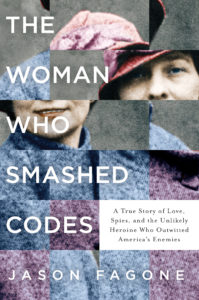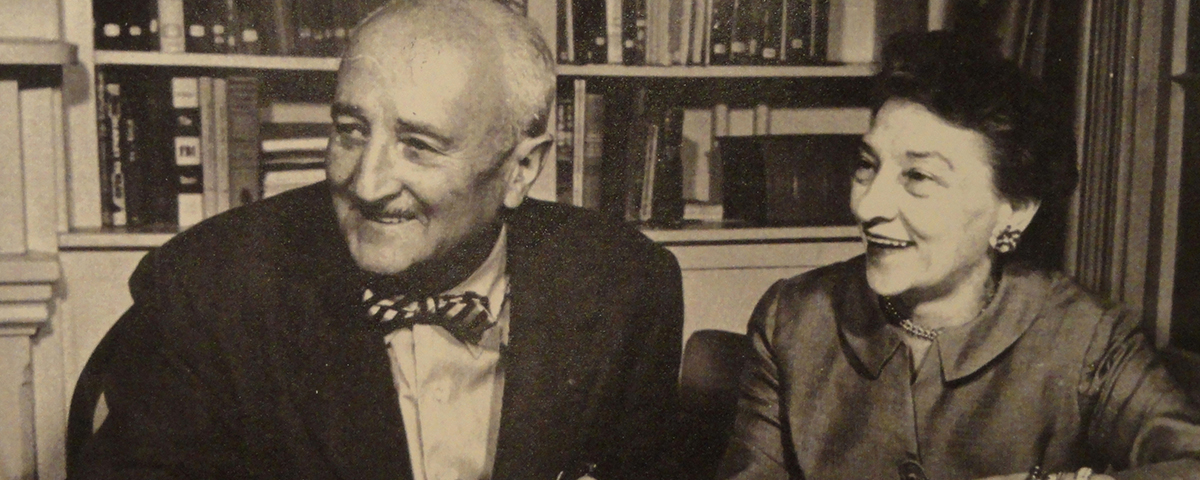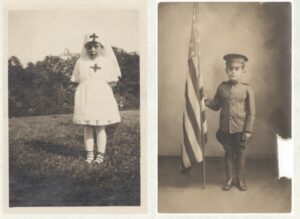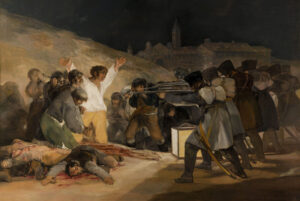A female American code breaker helped win both world wars but J. Edgar Hoover took the credit
WITHOUT technology or math training, Elizebeth Smith and William Friedman helped win both world wars by breaking enemy codes and laying the foundations of American cryptanalysis. In The Woman Who Smashed Codes, Jason Fagone recounts Elizebeth’s story, buried for decades by secrecy and sexism (See related online review, “Wartime Sisterhood of Secrets”).
How did Elizebeth Smith Friedman get her start? She was a 23-year-old small-town Indiana schoolteacher when she met George Fabyan, an eccentric multimillionaire who recruited

by Jason Fagone
Day Street Press (2017)
$27
experts to work on pet projects at his country mansion, Riverbank, in Geneva, Illinois. One of the projects involved finding secret messages supposedly hidden in the plays of Shakespeare, written in cipher. Fabyan hired Elizebeth, who had studied Shakespeare, to search for those messages. She met her future husband, William Friedman, at Riverbank. He was a Jewish geneticist from Pittsburgh. They married within a year and soon realized that Fabyan’s theory that Francis Bacon wrote Shakespeare’s plays was crazy and that Fabyan was crazy, too.
This steeped them in cryptanalysis. They were looking for patterns that turned out to be meaningless. Exposure to these false patterns made the Friedmans want to know how to find true patterns. They were geniuses at that.
They made a good team. Something miraculous happened when they worked together. They made each other better. Computers hadn’t been invented yet. They were working with graph paper and pencils, scribbling ideas, talking back and forth across a table. And as they worked, they discovered methods that became the basis for modern cryptanalysis.
Who did what? William’s approach seemed more mechanical, and Elizebeth seemed to have better linguistic skills and intuition—but that may be gender stereotyping.
What happened when America went to war? In 1917, when Congress declared war, America had no intelligence community. Only five or six people in the entire country knew anything about code breaking, and Elizebeth and William, both in their 20s, were two of them. George Fabyan offered their services to the U.S. government. William eventually served in France. Elizebeth spent the war solving intercepted German and Mexican messages sent her by mail from Washington, DC. After the war the Friedmans got sick of Fabyan—he was spying on them, intercepting their mail—and in late 1920 they left for Washington.
What did Elizebeth do between wars? At first she thought she’d stay at home and write children’s books. She gave birth to two children in the 1920s, a girl and then a boy. Government agents kept showing up on her doorstep, asking her to break codes for various departments, and the only way to make them go away was to say “Yes.” In 1925 she went to work for the Treasury Department, which was trying to enforce Prohibition. Liquor smugglers used sophisticated codes and ciphers to hide their operations. Elizebeth broke these codes and testified in court cases against gangsters, including three Al Capone lieutenants. In 1931 she launched and headed a new code-breaking unit within the Coast Guard.
And William? He founded a U.S. Army team that in 1940 broke the Japanese diplomatic code, Purple. This led to military victories, because the Allies could listen to their enemies’ secret conversations.
What did Elizebeth do during the war? Her main job was catching spies. Nazi espionage was a serious problem in neutral South American nations, but German agents used the same codes and radio techniques as rum-runners. The FBI didn’t know how to break the codes, but Elizebeth did. The FBI relied on her Coast Guard unit to track Nazi spy networks.
Elizabeth was the FBI’s secret weapon. Her unit broke the codes on about 50 Nazi radio circuits, including at least two protected with Enigma machines. J. Edgar Hoover stole the credit. He manufactured a myth that the FBI had done it all, shoving Elizebeth aside. Sexism helped to erase Elizebeth Friedman from the stories of how the war was won. Another factor was secrecy. Elizebeth’s records were stamped “TOP SECRET ULTRA” and classified for 50 years. She entered what she called “a vast dome of silence.”
How did William and Elizebeth cope with all that secrecy? It was tough on their marriage. William suffered from serious depression and was hospitalized multiple times.
The Cold War changed their lives. After World War II, alarm about the Soviet Union led to creation of the National Security Agency to monitor global threats. William was closely involved in the early days of the agency and generations of NSA code breakers learned the trade from William’s textbooks, which included the techniques he and Elize-
beth invented. She shut down her Coast Guard unit after the war.
The NSA betrayed them. During the ’50s, as the agency grew, William worried that it was becoming too secretive, classifying all kinds of documents that he thought should be public. Finally, the NSA turned on the Friedmans, who kept a private library of books and unclassified papers about secret writing. In 1958 the NSA sent agents to the Friedmans’ house on Capitol Hill and confiscated dozens of papers from their library, even old papers going all the way back to World War I.
How did the Friedmans react? They were angry, humiliated that the government would treat them as security threats when they’d spent their careers serving their country.
What did they do? Instead of donating what was left of his personal archive to the Library of Congress, William gave it to the private Marshall Foundation library. He and Elizebeth worked for years annotating the files for the benefit of historians. William died in 1969, but Elizebeth completed the project.
She had a collection of papers, too. Elizebeth donated 22 boxes of her own documents to the Marshall library, but she had not annotated them, and they didn’t attract a great deal of attention. After the Edward Snowden story broke, I was reading about the origins of the NSA when I found a brief reference to Elizebeth and her collection. I wanted to know more about her, so I started digging.
How should Elizebeth be remembered? As a heroine of World War II, a pioneering female technologist, and one of the greatest code breakers of all time.
Jason Fagone is a reporter for the San Francisco Chronicle.





